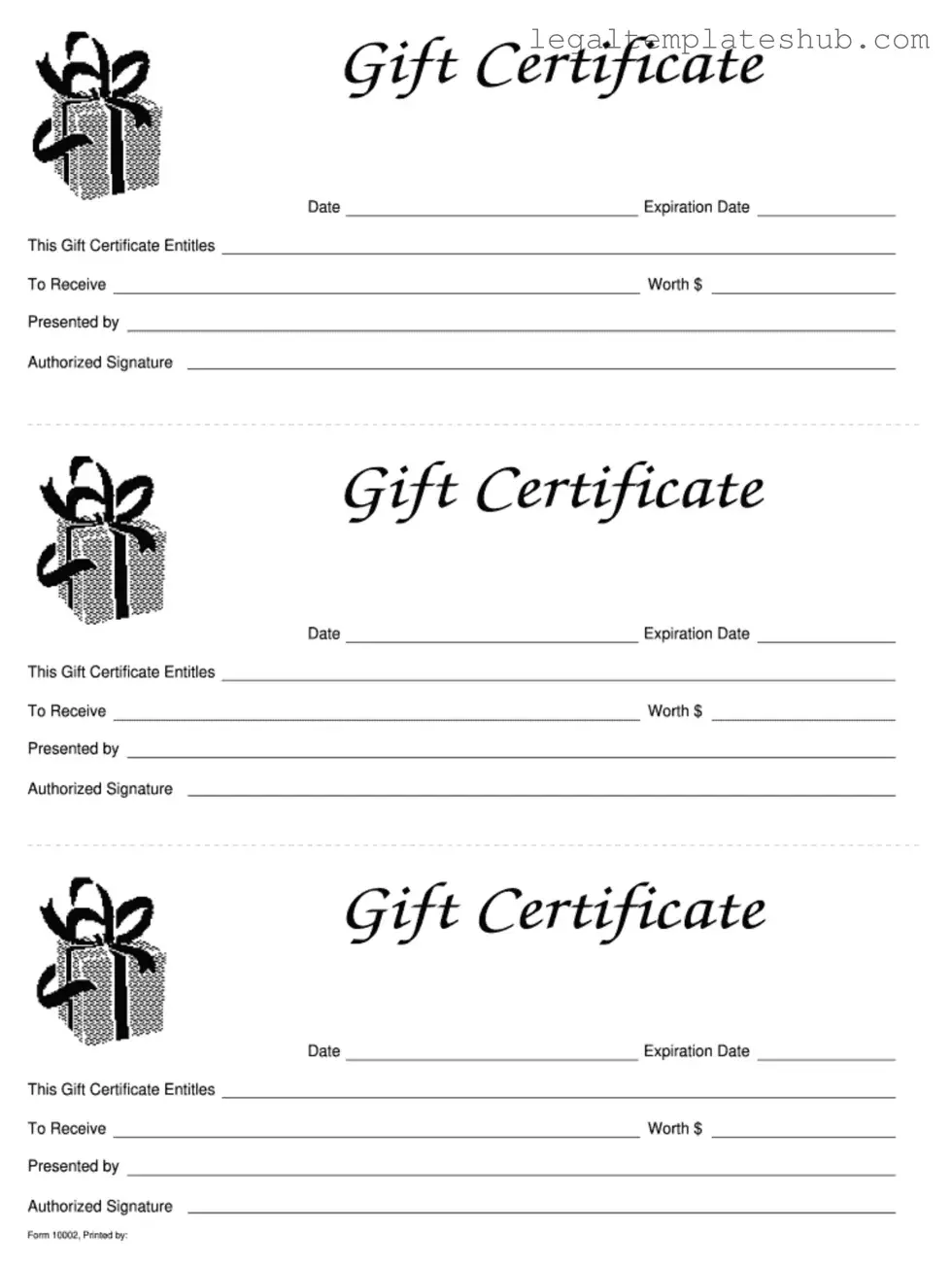Blank Gift Certificate PDF Form
A Gift Certificate form is a document that allows individuals to purchase a certificate for goods or services, which can be redeemed by the recipient at a later date. This form is essential for businesses looking to offer customers a flexible gifting option. To ensure a smooth transaction, fill out the form by clicking the button below.
Access Editor
